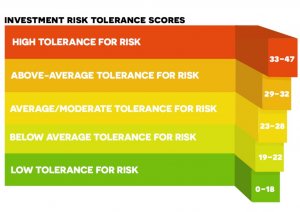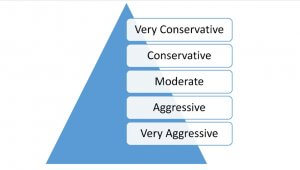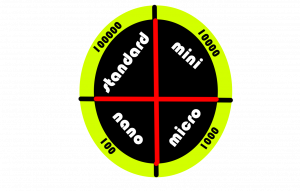Trading can be fun, mentally stimulating, and beneficial in several ways. But you shouldn’t confuse it with a casino machine. There are people addicted to trading, and many of them surprisingly have some sort of structured plan. The problem is that when managing their capital, these traders tend to fix the risks of their operations based on how they feel at the time. This type of placement of transactions with random sizes causes the trader to have no control and usually to be placed in situations of extreme exposure of his capital, which is dangerous and stressful.
Traders should introduce money management in the trading plan. It is not important whether you are an intraday trader or a scalper, someone who uses many indicators or just follows the price action. The point is that all trading systems, no matter how exotic, need good money management. This management will help the trader in various ways:
Consistency
Money management plans allow you to calculate risk very accurately. This eliminates any work of “guessing” the size of a position. If you find yourself placing commands with random position sizes that cross your mind, you will surely have a fairly interesting equity curve. When applying the control of good risk management, your operations will have a consistent risk. With each operation, you will know how hard you will be hit if your stop loss is hit. There is no shame in a stop-loss execution. No one earns 100% of their operations, and your risk management plan should ensure that your winning operations are broader than your losers.
Stability
The problem with operating without a money management plan is that you don’t really know how much risk you’ve placed in each operation. You could be risking too much on an operation and take a major loss, then on the next operation risk an insufficient amount and achieve your goal, but the profits will be less than they should. This responds to consistency in risk. We don’t want to risk $500 on an A operation and then only $50 on a B operation. If we have a plan regarding the amount to risk, our equity curve will stabilize, which will allow us to sleep more peacefully at night.
Money management allows you to keep emotions on the sidelines. Operating without a money management plan is quite stressful. Every element of trading is in need of a structure, and without it, you could surely encounter an anxiety attack if an operation doesn’t go your way. With position sizes or random stop placement, you don’t really know where you’ve gotten yourself. Surely by placing the operation you anticipated that it would go your way, but what if that doesn’t happen and you start losing more than you should?
This will begin to bring dangerous emotions that should never be mixed with trading. You could move your stop loss even further to give the operation the space to turn around, or maybe you could remove all your stops, exposing 100% of your capital in the markets. Or you could prematurely close an operation when it would actually have reached your goal. You could even open a new operation to help recover the accumulated losses. These are all dangerous practices that will do great harm to your mental health, and cause you to fall into stress.
The idea of using a money management plan is to avoid intervening emotionally in your operations. This way you will have consistency: you have already calculated how much you will lose if your stop loss is reached, you know that you feel comfortable with it and you also know that if your operation reaches the goal you will get a good return on your investment.
Money management could be the difference between success and failure. A proper money management strategy could bring a trading system that is below average back to life. You could even use the popular “moving stocking crossing” strategy, apply smart money management, and achieve major improvements in the performance of this system. One of the most important features of a powerful plan is that must project a return on positive investment. This is often achieved with positive risk-reward ratios.
The Power of Risk-Reward Management
Everyone is looking for the “holy grail” of trading systems. If you ever manage to find it, we can guarantee that it has a powerful and robust risk-reward model. The risk-reward profile of a money management plan could be the difference between success and failure, so it is very important that you come to understand the concept and apply it correctly to your trading.
What is risk profit?
The risk-reward ratio represents how much you’re risking compared to how much profit you’re aiming for. Here’s an example:
-If we open an operation with a risk of $50 and target a profit target of $250, then our risk-reward would be $50/ $250, or 1:5. We’re risking $50 to get a $250 return.
-If we had risked $10 and targeted a profit of $30, our risk-reward ratio would be 1:3.
-This percentage is very important for your commercial success in the long term.
The Danger of Negative Risk-Reward Ratios
Many traders use capital management methods that can have very negative effects on their equity curves. For example, scalpers are traders who place many small trades into and out of the market quickly. They believe that being on the market for a short time has some kind of advantage, although we disagree.
Let’s look at the money management profile of a trader who uses high-frequency trading strategies. Because scalpers only target small targets, it is difficult for them to get positive returns on investment. Here’s the reason: the market is full of players who operate for different reasons. This causes vibrations in price, which constitute the “noise” generated by all transactions taking place on the market. If a scalper targets a 3-pip target it is very difficult for him to place a stop loss that gives him a positive risk-reward profile.
Let’s say that the scalper wants to get a risk-reward ratio of 1:3. This means that you will need a stop loss of 1 pip to achieve this. Similarly, if I wanted a ratio of 1:1, I would need a stop loss of 3 pips. As you can see, the size of stops loss is unrealistic, with such small stops the trader would be taken out of the market almost instantaneously due to the noise that we have spoken about. At any moment the market could vibrate up and down 5 pips. For this reason, scalpers often get around this problem using negative risk-reward ratios, meaning they risk more than they expect to gain from each operation. A typical scalper could target a 5 pip target while placing a 20 pip stop loss to “cover” from any market noise.
In this example, the risk-reward ratio would be 4:1. This is a position we do not recommend you to be in. For each lost transaction, the trader will need 4 trades that reach their goal, and that if no additional loss occurs while getting those 4 winners.
That is why it is essential that your risk-reward ratio remains positive, otherwise you will be chasing your own tail and you will not get anywhere with your trading.
How a Positive Risk-Reward Ratio Gives You an Advantage
Now that we understand the concept of risk-reward ratios, let’s take a look at how a positive ratio can make you shine as a trader. Remember, positive risk-reward ratios mean you’re aiming to get more than you risk every time you plant an operation. A positive risk-reward ratio means more return on your investment, the advantage here is that you can tolerate more stop loss executions than you think. In fact, it is possible to lose more than half of your operations and still make a profit. This is because your winning operations recover all the losing operations you have accumulated plus a bonus. This way you’re able to grow your equity curve.
Losing trades hardly make a dent in a trader’s account that uses a positive risk-reward ratio. The higher the risk-reward profile, the trader can endure losing more trades without receiving damage to his account. We must stress that the higher the profit target, the more difficult or time-consuming it will be. Risk-reward 1:6 operations are not as easy to achieve as 1:2. We only have to earn 25% of all our operations to maintain the breakeven and with at least 26% we can already think of a long-term gain. We are confident that you now understand the benefits of including a robust money management system in your trading and can even further improve performance by introducing positive risk-reward profiles.






